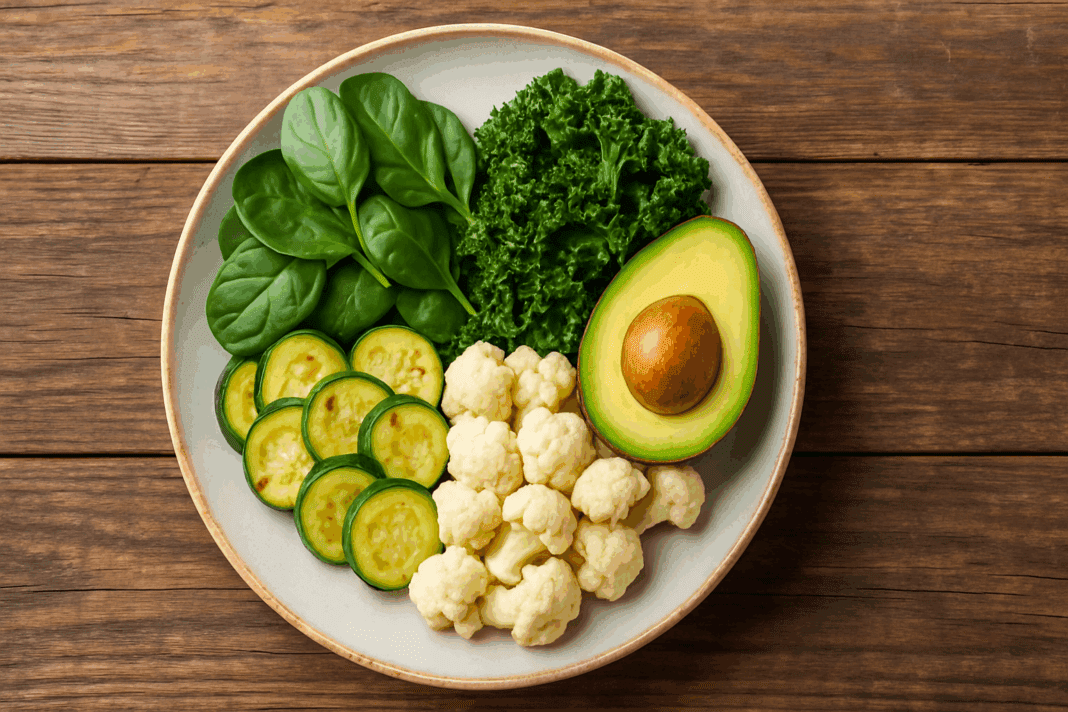Adopting a ketogenic lifestyle requires more than simply cutting carbs. To experience its full health benefits, such as improved heart health and sustainable weight loss, it is critical to understand the role of nutrient-dense vegetables within a keto diet. While many assume the keto food list excludes vegetables due to their carbohydrate content, certain vegetables are not only allowed but actively encouraged for their low glycemic load, fiber content, and cardiovascular benefits. This comprehensive guide explores the best vegetables for keto diet success, highlighting which keto-friendly vegetables align with a heart-smart lifestyle while supporting fat-burning ketosis.
For those just starting out, it can be difficult to answer the question: what can I eat on keto? The keto food list for beginners can appear restrictive at first glance. However, a well-formulated ketogenic food plan offers a diverse range of options when you understand the nutritional properties of different foods. Keto vegetables, in particular, provide essential vitamins, minerals, antioxidants, and fiber, all while helping to maintain the low-carb, high-fat macro balance central to ketosis. In this article, we’ll explore the top keto vegetables for heart and metabolic health, examine common misconceptions about certain foods like corn and broccoli, and offer expert-backed strategies to optimize your diet.
You may also like: Is the Keto Diet Safe or Dangerous? What Experts Say About the Risks, Benefits, and Basics of the Ketogenic Diet

Understanding the Role of Vegetables in the Ketogenic Diet
Vegetables are often associated with carbohydrates, which may lead some keto beginners to mistakenly avoid them. However, not all carbohydrates are created equal. Keto diet vegetables differ significantly in their net carbohydrate content and overall impact on blood glucose levels. Leafy greens, cruciferous vegetables, and certain low-starch varieties can be integrated seamlessly into a ketogenic meal plan, offering substantial health benefits without knocking the body out of ketosis. In fact, these good vegetables on keto play a central role in supporting digestive health, immune function, and cardiovascular wellness.
The keto food list includes both macronutrient and micronutrient-rich items, with many of the best keto diet foods falling within the category of plant-based options. While meat, eggs, and full-fat dairy often dominate keto conversations, vegetables like spinach, kale, zucchini, and cauliflower are just as important. These vegetables provide potassium, magnesium, and vitamin K—key nutrients often depleted during the initial phase of a ketogenic transition. Including the right keto friendly vegetables helps combat the initial fatigue or brain fog many experience when entering ketosis. Moreover, their fiber content supports satiety and gut health, both essential for sustained weight loss.
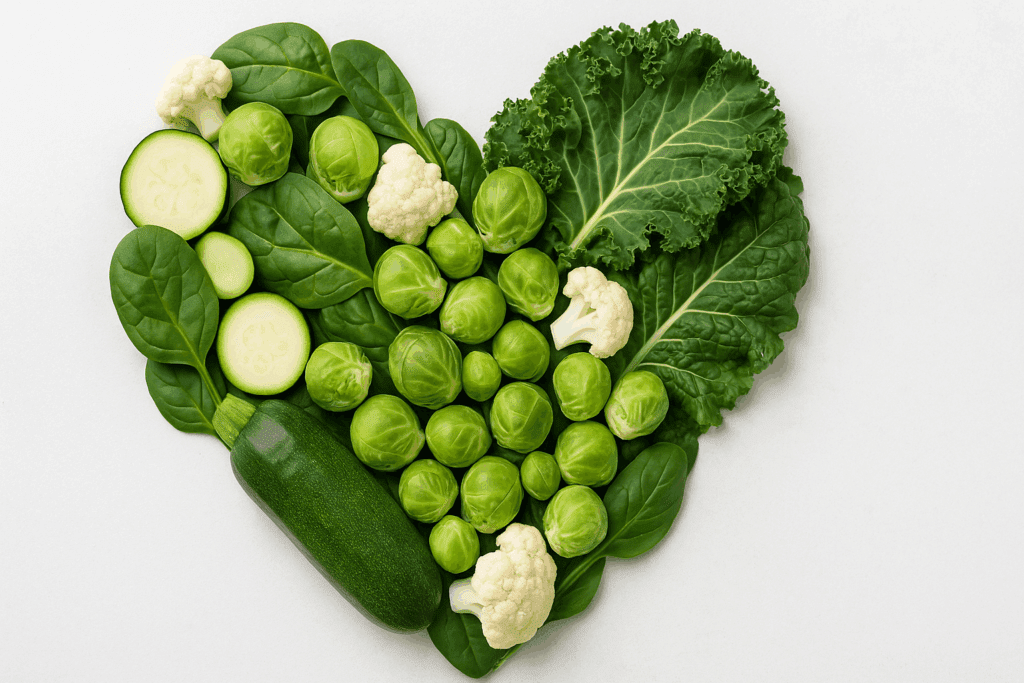
Top Keto Vegetables for Heart Health and Fat Loss
Among the best keto vegetables are leafy greens like arugula, romaine, and spinach. These vegetables are virtually free of digestible carbs and are rich in heart-protective nutrients like folate and potassium. They also contain plant-based nitrates, which have been associated with improved vascular function and lower blood pressure—two critical factors for cardiovascular wellness. Including these keto diet vegetables daily can help mitigate the risks of heart disease while supporting metabolic efficiency.
Another standout in the keto vegetables list is cauliflower. Versatile and low in carbs, cauliflower can be used as a rice substitute, pizza crust base, or mashed potato alternative, all while delivering glucosinolates and fiber. These compounds have been studied for their anti-inflammatory effects and potential in cancer prevention. Similarly, cruciferous vegetables like Brussels sprouts and cabbage are rich in antioxidants and low enough in carbs to maintain ketosis. These vegetables not only fit well within the good food for keto diet framework but also contribute to arterial health through their anti-inflammatory and lipid-lowering properties.
Zucchini and eggplant also deserve attention. Zucchini, in particular, is one of the best keto foods for replacing higher-carb items like pasta. It contains vitamin C and manganese while maintaining a net carb content of just 2–3 grams per cup. Eggplant provides anthocyanins, which support vascular elasticity and reduce oxidative stress. Together, they represent excellent additions to any keto food list for beginners.
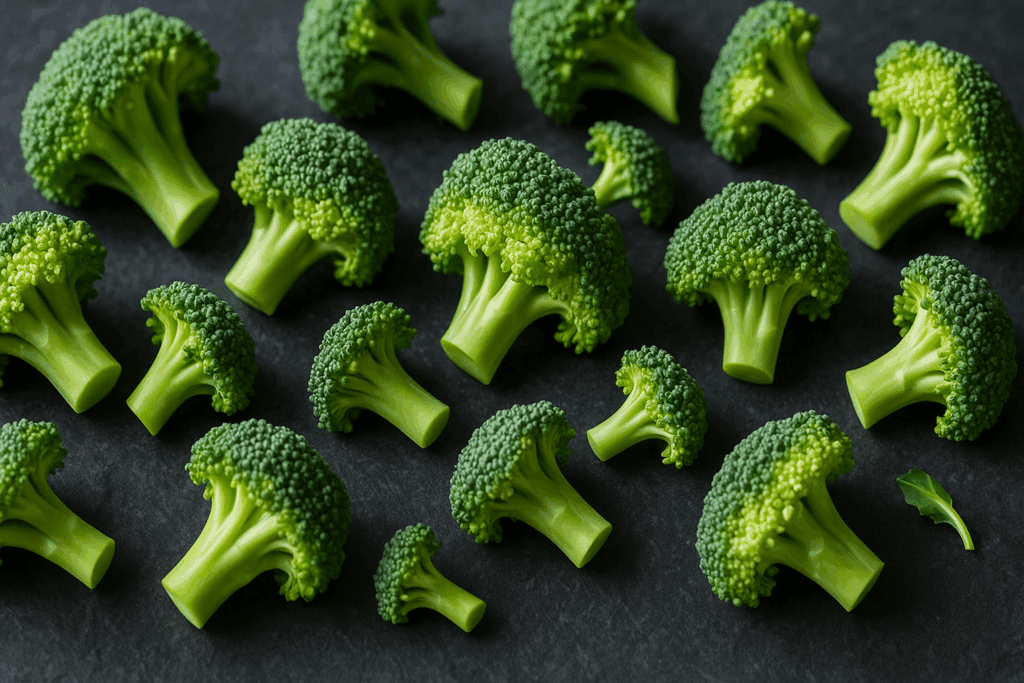
Is Broccoli Keto Friendly? Clearing the Confusion
A common question among keto adherents is: is broccoli keto? The short answer is yes—broccoli is not only keto-friendly, it’s one of the most nutritionally valuable vegetables to include on a keto food list. With just 4 grams of net carbs per cup, broccoli fits comfortably within daily carb limits. More importantly, it contains sulforaphane, a potent compound with demonstrated effects on detoxification pathways, inflammation regulation, and even cognitive function.
The idea that broccoli might be off-limits arises from confusion over total carbs versus net carbs. The keto diet emphasizes net carbs—the digestible carbohydrates that affect blood glucose. Fiber is subtracted from total carbs in this calculation, making many high-fiber vegetables suitable for the ketogenic food pattern. As such, not only is broccoli ketogenic, it is arguably one of the best keto vegetables available. Is broccoli keto friendly? Without a doubt—and it should be a regular feature in any health-focused keto plan.
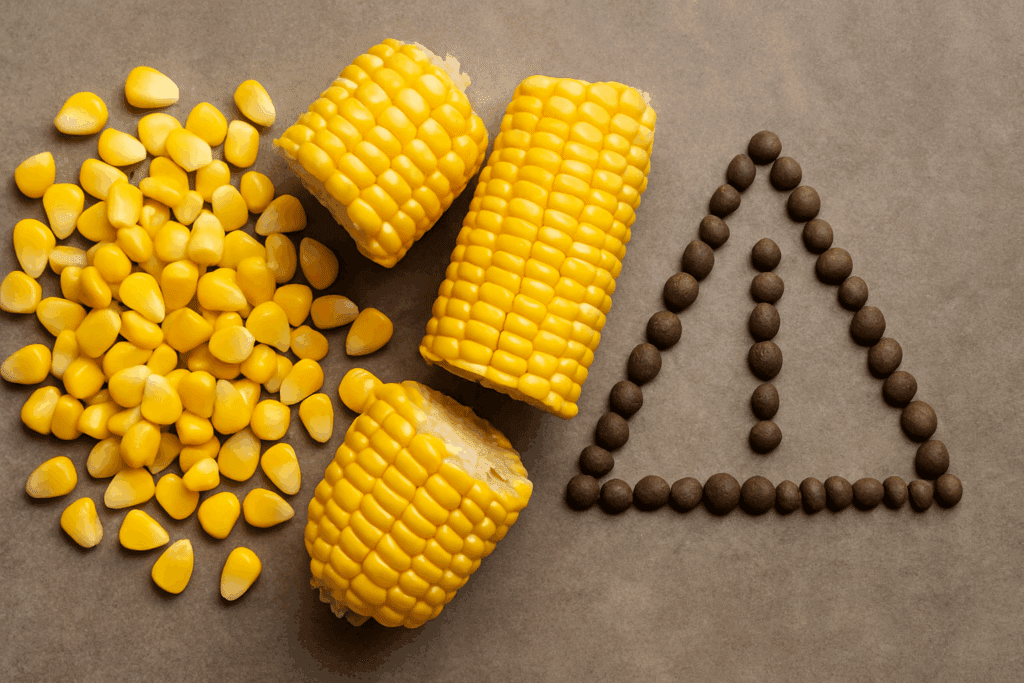
The Truth About Corn on a Keto Diet
One of the more debated vegetables in keto circles is corn. So, is corn keto? The answer is more nuanced. Corn is relatively high in carbohydrates, with a single ear containing upwards of 25 grams of net carbs—enough to disrupt ketosis for many individuals. As a result, corn is generally not recommended for those adhering strictly to a ketogenic diet. Thus, the answer to is corn keto friendly would typically be no, unless consumed in extremely small portions and offset by other very low-carb meals.
However, context matters. Some individuals following a cyclical ketogenic diet or a targeted ketogenic approach—designed for athletes or those with higher glycogen demands—may incorporate small amounts of corn without adverse effects. That said, for the standard ketogenic diet aimed at weight loss and heart health, corn does not appear on the preferred keto vegetables list. Instead, individuals should focus on lower-carb options that better support consistent ketosis and stable blood glucose levels.
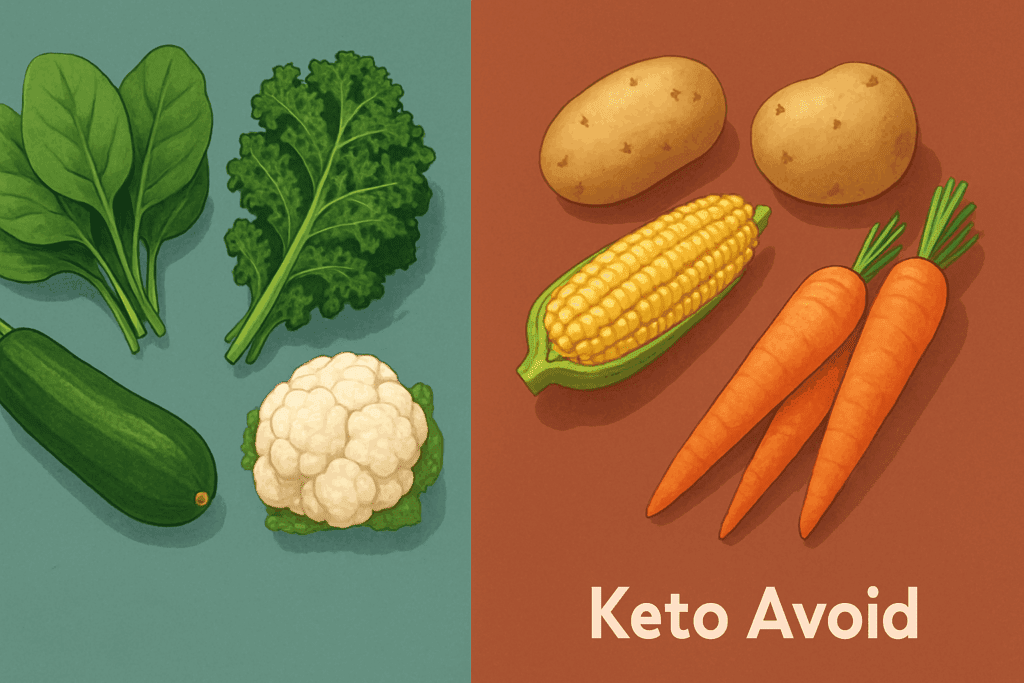
Understanding the Keto Vegetables to Avoid List
Maintaining ketosis requires attention not only to what to eat but also what to limit. Some vegetables, while otherwise healthy, can hinder progress on a keto diet due to their high starch content. Root vegetables like potatoes, sweet potatoes, carrots, and parsnips tend to have higher net carbs and appear frequently on the keto vegetables to avoid list. These items can quickly raise insulin and glucose levels, reducing fat oxidation and halting the metabolic benefits of ketosis.
While moderation is always key, those who are in the initial stages of adapting to a ketogenic food regimen should be particularly mindful of high-carb vegetables. Including these items too liberally can lead to frustration, stalled weight loss, and difficulty entering or sustaining ketosis. A strategic approach to keto diet vegetables—focusing on high-fiber, low-starch varieties—is essential for both success and sustainability.
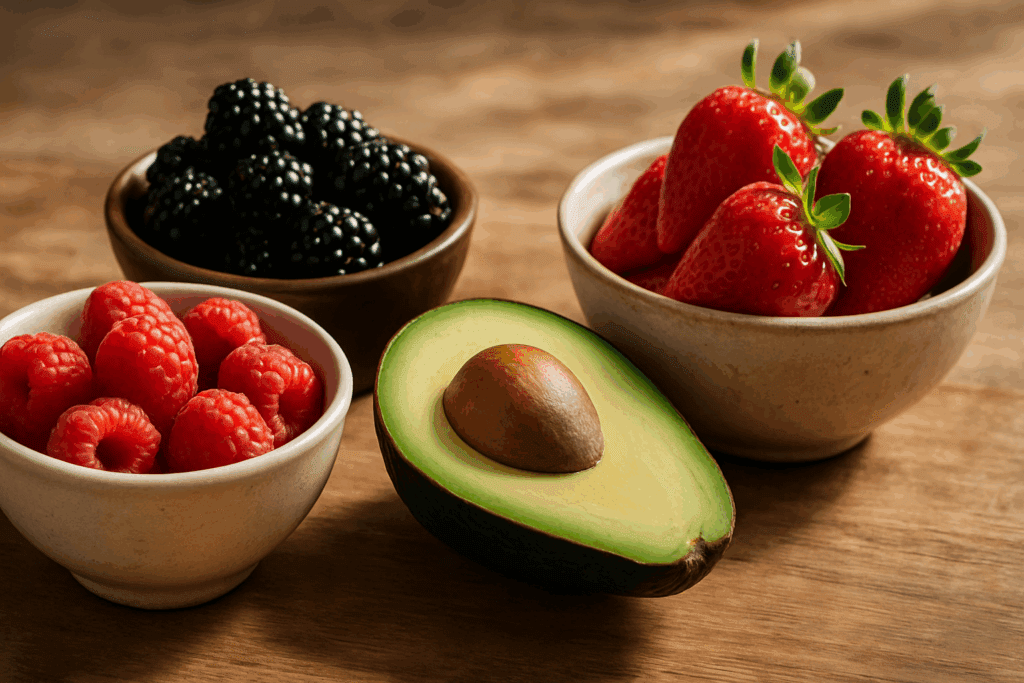
What Fruits Are Keto Friendly?
While this guide focuses on vegetables, a frequently asked question among those exploring what can u eat on a keto diet is: what fruits are keto friendly? The answer lies in sugar content. Many fruits are high in natural sugars, which can disrupt ketosis. However, some fruits can be included in moderation. Berries such as raspberries, blackberries, and strawberries are among the most keto-friendly fruits, offering antioxidants and fiber with relatively low net carbs. Avocados, often considered a fruit, are rich in healthy fats and contain less than 2 grams of net carbs per serving, making them one of the best keto diet foods overall.
Understanding which fruits and vegetables support ketosis allows for a more flexible, enjoyable, and nutritionally balanced diet. Including keto friendly fruits and vegetables not only supports better adherence to the dietary protocol but also protects against micronutrient deficiencies. These foods offer bioactive compounds that reduce inflammation and promote mitochondrial function—factors essential for long-term cardiovascular and metabolic health.
Ketosis Diet Foods and the Science Behind Their Effectiveness
Ketosis occurs when the body shifts from using glucose to burning fat for energy, producing ketone bodies in the process. This metabolic state is achieved by consuming very low amounts of carbohydrates—typically under 50 grams per day—while increasing fat intake. Ketosis diet foods are designed to support this state by minimizing insulin spikes and promoting fat oxidation. Within this framework, keto vegetables play a crucial role.
Vegetables such as kale, chard, and collard greens offer high nutrient density without exceeding carbohydrate limits. Their fiber content supports digestion and feeds beneficial gut bacteria, which in turn influence everything from immune health to mood regulation. Additionally, many of these vegetables contain plant sterols and polyphenols that directly support heart health. When selecting good vegetables on keto, aim for diversity and freshness. Including a range of textures and colors ensures a broader spectrum of phytonutrients and maximizes anti-inflammatory benefits.
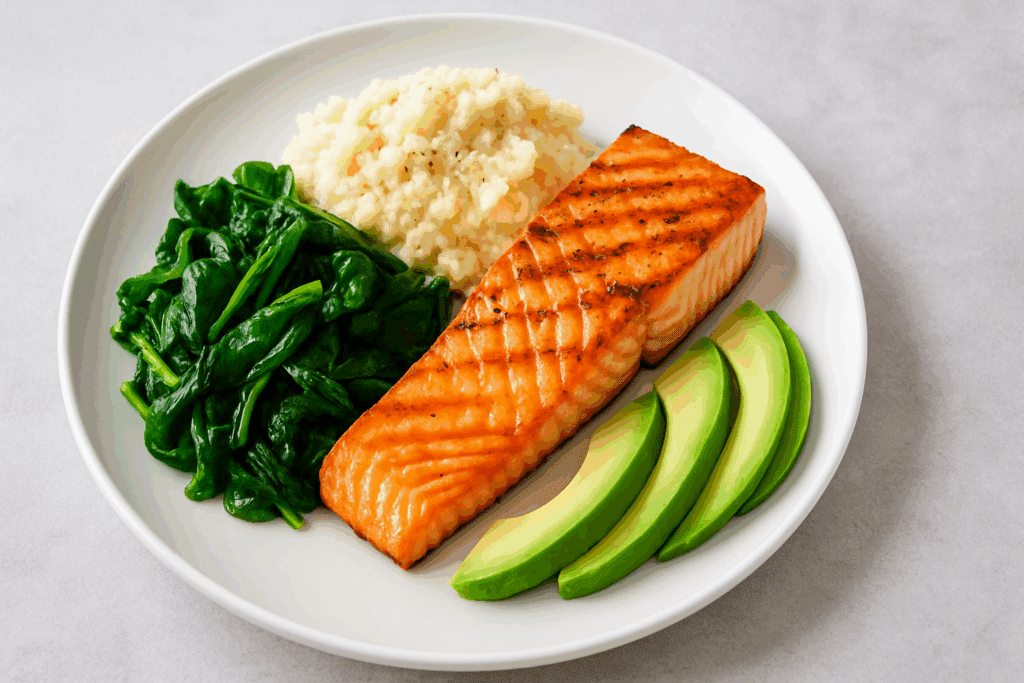
What Can I Eat on Keto to Stay in Ketosis and Protect My Heart?
Navigating the question of what can I eat on keto becomes easier with a deeper understanding of food quality and metabolic response. To maintain ketosis and protect cardiovascular health, meals should include non-starchy vegetables, healthy fats (like olive oil and avocado), and high-quality protein sources. Combining these elements reduces hunger, improves lipid profiles, and supports steady energy levels. Incorporating best keto foods like spinach, broccoli, and cauliflower ensures not only carb control but also vascular protection through magnesium and potassium intake.
When planning meals using a keto food list for beginners, it’s important to recognize the synergy between various food components. For example, pairing leafy greens with olive oil enhances the absorption of fat-soluble vitamins, while adding nuts or seeds to a salad provides texture, fiber, and heart-friendly omega-3 fats. These thoughtful combinations elevate keto from a restrictive plan to a health-affirming lifestyle.
Creating a Personalized Keto Diet Vegetables List
A successful ketogenic diet should feel sustainable and satisfying. To achieve this, personalize your keto diet vegetables list based on taste preferences, nutritional needs, and health goals. Some individuals may prioritize potassium-rich vegetables like spinach and avocado to manage blood pressure, while others may lean on anti-inflammatory foods like kale and Brussels sprouts. Regardless of the combination, aim for consistency and variety.
Meal planning can be simplified by building dishes around these core keto vegetables, adding quality fats, and seasoning with herbs and spices that do not add carbs. Roasted broccoli with olive oil and garlic, cauliflower mash with ghee, and zucchini noodles tossed with pesto are examples of flavorful, keto-approved meals. Over time, this approach shifts the focus from restriction to nourishment, reinforcing adherence and enjoyment.
Why Keto Vegetables Are Essential for More Than Just Weight Loss
It’s easy to focus on the weight loss benefits of the ketogenic diet, but the best keto vegetables support much more than just a leaner waistline. The nutrients found in keto friendly vegetables play a pivotal role in reducing systemic inflammation, improving endothelial function, and regulating oxidative stress—all of which are central to heart disease prevention. The long-term benefits of eating keto diet vegetables regularly extend to cognitive health, hormone regulation, and even cancer risk reduction.
Emerging research continues to highlight how ketosis diet foods influence epigenetic expression and cellular metabolism. This means that what we eat on keto affects our bodies at the molecular level, making food choices more powerful than ever. By emphasizing good food for keto diet success—especially nutrient-dense vegetables—we position ourselves for sustainable health gains that transcend the scale.
Frequently Asked Questions: Keto Vegetables, Fruits, and Foods for Heart Health and Weight Loss
1. Can eating more keto vegetables improve my metabolic health beyond weight loss?
Absolutely. While weight loss is a common goal of the ketogenic diet, increasing intake of keto vegetables also supports long-term metabolic health through several other mechanisms. The best vegetables for keto diet success, such as spinach, kale, and zucchini, are packed with magnesium, potassium, and folate, all of which play essential roles in glucose regulation and insulin sensitivity. Unlike highly processed low-carb alternatives, whole keto foods like leafy greens support cellular energy production and mitochondrial efficiency. This can reduce inflammation and oxidative stress—two key drivers of metabolic syndrome. So, by prioritizing keto diet vegetables, you’re investing in deeper cellular resilience, not just the number on the scale.
2. How can I build a keto food list for beginners that actually keeps me full and satisfied?
The key to creating a satisfying keto food list for beginners lies in pairing keto friendly vegetables with high-fat, moderate-protein ingredients that promote satiety. Foods like avocado, hard-boiled eggs, grass-fed butter, and fatty fish complement keto vegetables such as cauliflower or asparagus to form meals that are both filling and nutritionally dense. In fact, the best keto diet foods help stabilize ghrelin (your hunger hormone) and support blood sugar control. Fiber-rich keto vegetables like artichokes and Swiss chard can further slow digestion, keeping you full longer without spiking insulin. When building your keto food list, focus on variety, texture, and mindful seasoning to maintain interest and reduce cravings.
3. Is it necessary to avoid all starchy vegetables on keto, or is moderation possible?
This is where nuance comes in. While the keto vegetables to avoid list often includes potatoes, corn, and carrots, context and portion control matter. Is corn keto? Not usually, but in very small amounts—for example, a tablespoon of corn in a large salad of low-carb vegetables—it may not disrupt ketosis for everyone. Similarly, baby carrots can sometimes fit in if you’re not already near your daily net carb limit. That said, those newer to the ketogenic lifestyle are often better off sticking with the best keto vegetables until their metabolism has adapted fully. Once fat-adapted, some individuals can experiment with limited amounts of starchy vegetables without significant metabolic disruption.
4. What keto friendly fruits and vegetables are best for people with high blood pressure?
Those managing high blood pressure should emphasize potassium-rich keto friendly fruits and vegetables to help balance sodium and relax blood vessels. Avocados, spinach, and zucchini are all excellent keto diet vegetables with heart-healthy benefits. While many fruits are excluded from keto, what fruits are keto friendly include options like raspberries and blackberries, which offer antioxidants and fiber without excessive sugar. These keto foods help regulate endothelial function, which is crucial for maintaining vascular flexibility and healthy circulation. By integrating both fruits and vegetables with cardiovascular support in mind, you’re not only following a ketogenic food plan but also reducing long-term cardiovascular risk.
5. How can I tell if my keto vegetable intake is supporting ketosis effectively?
You’ll notice signs like sustained energy, reduced cravings, better digestion, and consistent fat loss when your intake of keto vegetables is well balanced. If your meals primarily feature keto friendly vegetables like leafy greens, cruciferous options, and low-starch choices such as mushrooms and cucumbers, you’re likely staying within the net carb threshold needed to maintain ketosis. However, it’s still important to track how your body responds to certain keto diet vegetables. For instance, if you include a new item like spaghetti squash and experience bloating or hunger spikes, it might be affecting your blood glucose more than expected. Learning how different vegetables affect your own ketosis can help you fine-tune your keto food list for optimal performance.
6. Is broccoli keto friendly, and are there better alternatives?
Yes, broccoli is keto friendly, and it remains a top-tier vegetable for anyone following a ketogenic food plan. Is broccoli ketogenic? It fits well into that definition thanks to its low net carbs, high fiber, and rich micronutrient content. Still, if you’re looking for diversity in your diet, consider rotating with broccolini, bok choy, or rapini, which offer similar benefits with slightly different taste profiles and phytonutrients. These lesser-known but equally powerful options can prevent flavor fatigue while expanding your intake of beneficial antioxidants. Is broccoli keto? Yes—and so are its cruciferous cousins.
7. What fruit can you eat on keto when cravings for sweets hit hard?
Instead of reaching for high-sugar fruits like bananas or mangoes, which are not part of a keto friendly fruits and vegetables plan, reach for berries or olives. Raspberries, in particular, contain fewer than 5 grams of net carbs per half-cup serving and provide a burst of sweetness along with gut-friendly fiber. When you’re asking what fruit can you eat on keto that won’t derail your progress, don’t forget about lemons and limes. These are often overlooked but can be added to water, teas, or dressings to satisfy your palate. The best keto diet foods for sweet cravings are those that offer natural sugar alternatives with antioxidant-rich profiles.
8. How does eating the best keto vegetables impact mental performance?
Cognitive clarity and stable mood are often underrated benefits of including the best vegetables for keto diet health. Ketogenic food choices such as spinach, kale, and seaweed are rich in magnesium and B-vitamins, which help regulate the nervous system and neurotransmitter balance. Additionally, keto vegetables that are high in fiber promote a healthier gut microbiome, which is increasingly linked to mental well-being through the gut-brain axis. Maintaining this balance may enhance focus and reduce brain fog. When constructing your keto food list, consider how the inclusion of good vegetables on keto can support both physical and cognitive performance.
9. Can ketosis diet foods be sustainable long-term with vegetables at the center?
Yes, and perhaps even more so than heavily meat-based approaches. Many people find that building a diet around keto vegetables reduces inflammation, improves digestion, and makes the lifestyle more sustainable. Keto diet vegetables like fennel, celery, and radishes offer crunch and variety, which can help prevent diet fatigue and promote better adherence. The best keto foods are those that nourish you without causing deprivation, and vegetables meet that need beautifully. By developing a diverse keto diet vegetables list and rotating your choices weekly, you reduce the risk of micronutrient deficiencies and create a foundation for long-term metabolic success.
10. How can I transition from standard low-carb eating to a more structured ketogenic vegetable-based plan?
Start by reviewing your current intake and identifying hidden carbs, especially from condiments, sauces, and snack foods. Gradually swap high-carb vegetables for the best keto vegetables, focusing on options like cauliflower, bell peppers, and leafy greens. Next, enhance your keto food list with good food for keto diet consistency—think eggs, coconut oil, and small portions of nuts. By slowly increasing your reliance on keto friendly vegetables and cutting back on grains and starches, your body will begin shifting toward fat-burning metabolism. Within a few weeks, this gentle transition will help you experience the full benefits of ketosis diet foods without the harsh symptoms often associated with abrupt carb restriction.
Final Thoughts on the Best Keto Vegetables for a Heart-Healthy Ketogenic Lifestyle
Choosing the best vegetables for keto diet success means more than counting carbs. It means selecting foods that nourish the body, stabilize blood sugar, and support long-term cardiovascular health. From leafy greens and cruciferous vegetables to low-carb fruits and high-fiber plant foods, the keto food list can be both satisfying and heart-healthy when curated with intention.
Whether you’re wondering what fruit can you eat on keto or asking is broccoli ketogenic, the key lies in understanding nutrient density, glycemic impact, and individual tolerance. A well-rounded keto diet vegetables list not only supports weight loss but also improves energy, mood, and resilience. By prioritizing keto friendly fruits and vegetables over high-starch options like corn, you align your diet with metabolic efficiency and evidence-based strategies for disease prevention.
Ultimately, the most powerful ketogenic food choices are those that integrate seamlessly into your lifestyle while enhancing your well-being. With proper planning, education, and creativity, the ketogenic diet can be a tool for not just weight management but holistic, long-lasting health. Let vegetables lead the way.
Further Reading:
What foods can you eat on the keto diet and is it healthy?
20 Foods to Eat on the Keto Diet


